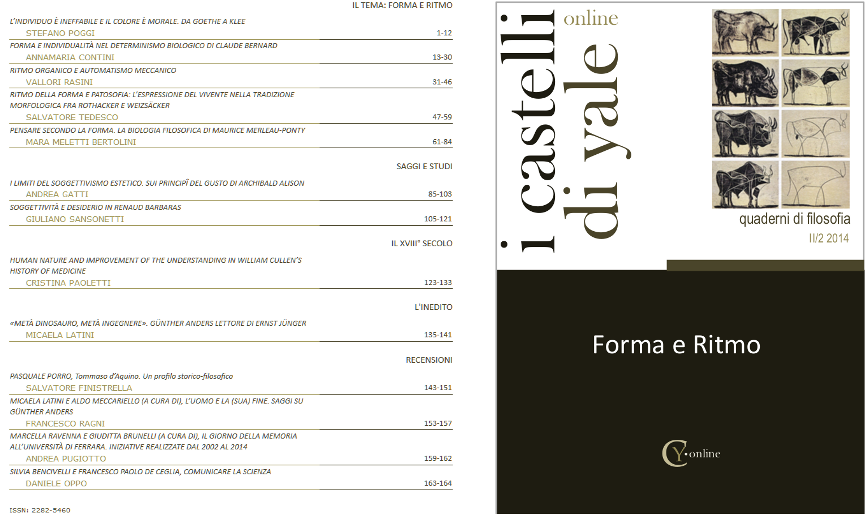<i>RITMO DELLA FORMA E PATOSOFIA: L’ESPRESSIONE DEL VIVENTE NELLA TRADIZIONE MORFOLOGICA FRA ROTHACKER E WEIZSÄCKER</i>
DOI:
https://doi.org/10.15160/2282-5460/970Parole chiave:
Storia della filosofia, Estetica, Forma, Rothacker, WeizsäckerAbstract
In the tradition of twentieth-century morphological thinking, the concept of form constitutes the profound unity from which it is possible to articulate the relationship between subject and object and the expressive qualities of experience and reality. Erich Rothacker in his last book, pub- lished posthumously in 1966 and titled Zur Genealogie des menschlichen Bewusstseins, outlines a genesis of human consciousness in which the relationship with reality is structured expressively starting from sensory-motor images up to the conscience of the world (Weltbewusstsein) on the basis of a criterion of organic-expressive significance, while, even more markedly, Viktor von Weizsäcker concludes his theory of Gestaltkreis reformulating the “circularity of form” as a “circularity of life” (Lebenskreis), to be grasped on the basis of pathic-expressive categories that belong to the experience of form.


